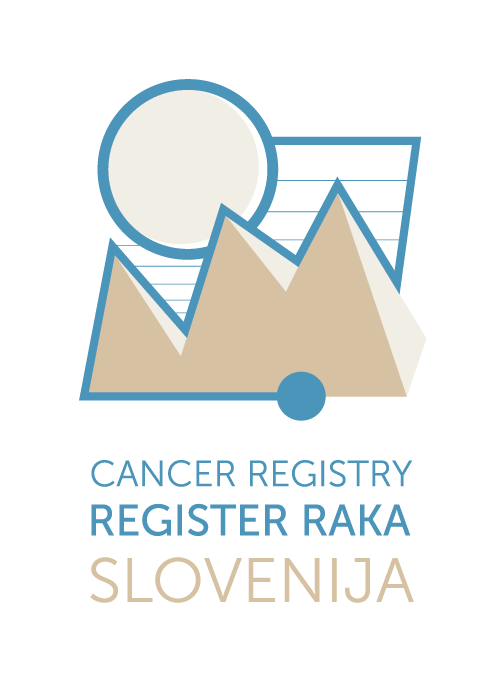Kaj je rak?
Rak (s tujko malignom ali maligni tumor) je bolezen, ki nastane zaradi nepopravljive spremembe v celičnem jedru, mutacije genov, bodisi v telesnih ali v spolnih celicah. Spremenjene gene (mutacijo) lahko podedujemo ali pa nastane za časa življenja. Kadar se mutacija prenese s staršev na potomce in potomec zboli, govorimo o dednem raku. Genetsko pogojenih, dednih rakov, je v celotnem številu raka v prebivalstvu malo, ocenjuje se jih le na 5 odstotkov od vseh rakov. Pomembnejše so razlike v presnovi celic, ki jih človek tudi podeduje in pomagajo popravljati okvare genov, ki jih v celicah neprestano povzročajo škodljivi dejavniki iz okolja. Ti škodljivi dejavniki, bodisi fizikalni (npr. sevanje UV), kemični (npr. iz tobačnega dima ali hrane) ali biološki (npr. virus HPV), lahko povzročajo mutacije neposredno ali pa poškodujejo procese, ki v celicah popravljajo napake, ki nastajajo v genih.
Zaradi nepovratne spremembe se celice začno nenadzorovano deliti, zato vraščajo v sosednja tkiva, potujejo po mezgovnicah v bezgavke, kasneje jih kri lahko zanese v oddaljene organe, kjer nastanejo zasevki. Od začetne spremembe celice do takrat, ko je bolezen mogoče zaznati, bodisi kot bulo ali kot spremembo v delovanju organov, mine več let, lahko tudi desetletij.
V rakavo se lahko spremeni katerakoli celica v telesu. Glede na vrsto tkiva delimo rakave bolezni v štiri velike skupine:
- Karcinomi nastanejo iz epitelnih celic (celic vrhnjice), ki gradijo večino telesnih organov; mednje sodi okrog 80 % vseh rakov.
- Sarkomi nastanejo iz celic opornih tkiv in se pojavljajo zlasti v vezivu, maščevju, kosteh in hrustancu.
- Levkemije so rakaste bolezni krvi in krvotvornih organov. V nasprotju z večino drugih rakov se navadno ne pojavljajo v obliki bul ali zatrdlin.
- Limfomi so rakaste bolezni limfatičnega sistema, ki ga v telesu tvori omrežje mezgovnic in bezgavk. Limfatični sistem deluje kot nekakšen filter, ki preprečuje, da bi telesu nevarne snovi (npr. mikroorganizmi) vdrle v krvni obtok.
Dokler je karcinom omejen le na epitelij in še ne vrašča v spodaj ležeče tkivo, ga imenujemo intraepitelijski oz. »in situ« rak in ga ne uvrščamo v klasično skupino rakov. Z manjšo operacijo je večina teh bolezni popolnoma ozdravljiva. Posebej zanimiva iz te skupine sta rak materničnega vratu in dojk. Njihova incidenca kaže uspešnost presejanja, predvsem organiziranih presejalnih programov, kot sta v Sloveniji ZORA in DORA. Register raka RS spremlja intraepitelijske karcinome dojke od leta 1987, intraepiteljiske spremembe materničnega vratu od leta 1993, od leta 1995 pa intraepitelijske karcinome mehurja in kožne melanome Clark I.
Tkivo v teh osnovnih skupinah rakov ima številne posebnosti. Vidne so pod mikroskopom, tudi z različnimi dodatnimi barvanji ali drugimi tehnikami, zdravniki patomorfologi pa jih zato še dodatno opredelijo po teh značilnostih in razvrstijo posebnih klasifikacijah . Od teh posebnosti sta mnogokrat odvisna potek bolezni in izid zdravljenja.
Rak lahko vznikne v vsakem organu. Za razvrščanje rakavih bolezni po mestu, kjer so nastale, je pri nas in v svetu uveljavljena Mednarodne klasifikacije bolezni in sorodnih zdravstvenih problemov za statistične namene, ki jo pripravljajo v Svetovni zdravstveni organizaciji. Številna nova dognanja vsakih 10 let povzamejo v novi izdaji te klasifikacije. V Registru raka od leta 1997 uporabljamo deseto revizijo, do takrat pa smo uporabljali osmo.
Bolezen je ob diagnozi lahko samo majhna, komaj vidna sprememba ali pa rak že vrašča v sosednja tkiva, se širi v bezgavke ali pa v oddaljene oddaljeni organi. Glede na razširjenost kliniki razvrščajo rakave bolezni v več stadijih po različnih sistemih, največkrat po klasifikaciji TNM (T za tumor, N za nodus, kar pomeni bezgavka, M za metastaza, kar pomeni zasevek). V registrih za opredelitev stadija bolezni večinoma uporabljamo poenostavljeno razvrščanje v eno od treh skupin: omejena bolezen, regionalno razširjena bolezen in oddaljeno razširjena bolezen.




